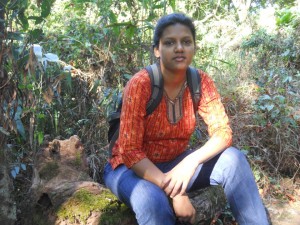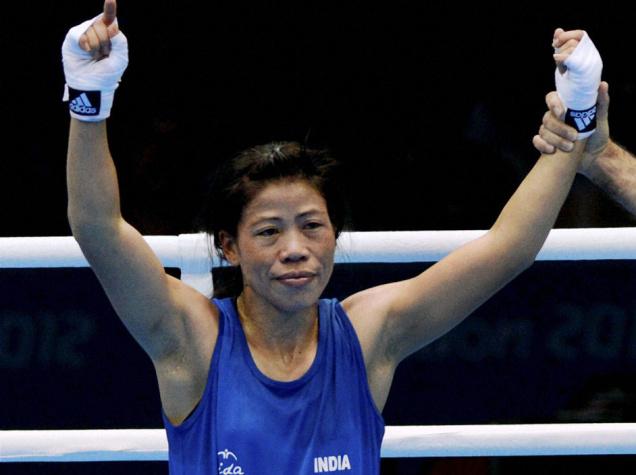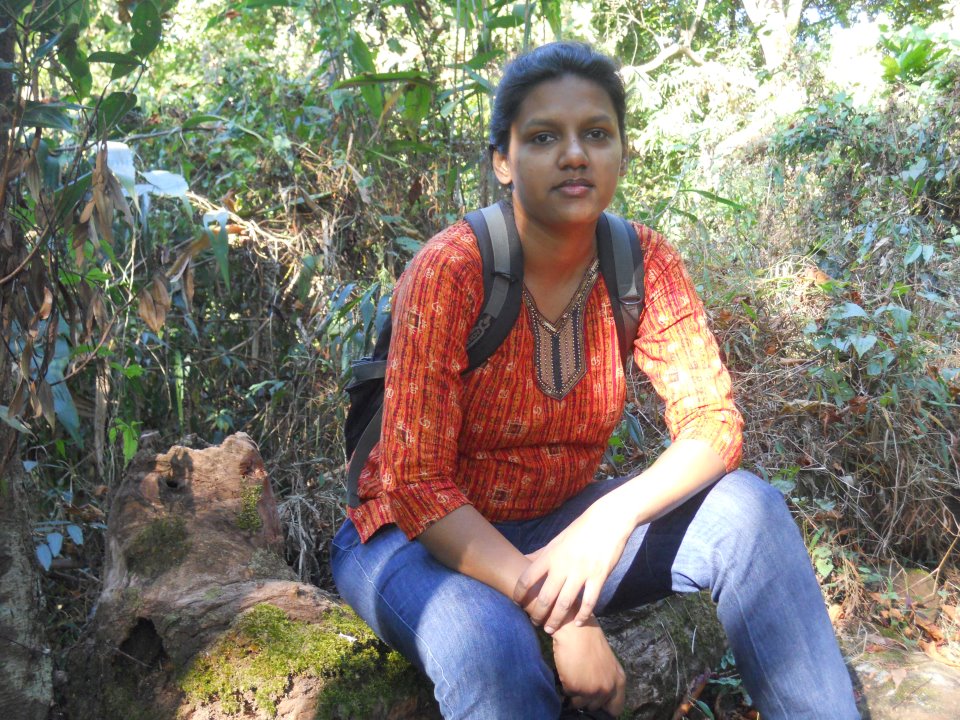Rahi Gaikwad
 She boxed her way to glory, but wrestled her way to the ring. The reason why the nation today salutes the formidable Mary Kom.
She boxed her way to glory, but wrestled her way to the ring. The reason why the nation today salutes the formidable Mary Kom.
Allow me to boast that recently, I had the good fortune of attending an event held to felicitate the medal-rich champion.
Mary was effervescent; she came with her husband Onler and doctor Nikhil Latey. She spoke candidly of the challenges that she had to face in her 12-year boxing journey to Olympics 2012. Marriage, childbirth, fighting in higher weight categories, the attitude of men towards a woman boxer – all had to be met, one by one.
“Boxing is not easy,” said Mary at the function held on August 23 in Mumbai. “When I started, my male friends would say it is not a woman’s sport. But I say if men can do it then why not women.”
A Sachin Tendulkar or Dhoni perhaps did not have these life events as challenges. Ever heard them talk of marriage or children as a challenge to their careers?
That’s why Mary excels at so many levels. She has amply proved her own dictum – ‘if men can do it so can women’. In a nation, where the images of Indian women constantly being beamed into our drawing rooms through our films – let’s face it Bollywood has overtaken everything – and Saas-Bahu television series, are so regressive, body-focussed and infused with gaze-grabbing sexuality, Mary Kom with her gloves and gum shield comes as the much needed icon. She is an image buster and builder too.
 Her husband Onler, whom Mary credits with being her pillar of strength, is no less a stereotype buster himself.
Her husband Onler, whom Mary credits with being her pillar of strength, is no less a stereotype buster himself.
“Everyone thinks she made it because of my support, but I am just doing my ‘homework.’ Because of my love for Mary, I can cook and wash and do everything. She says, ‘If men can do it why not women?’ And I say if women can do it, why not men?” Indeed, both seem to say why not.
In a comprehensive and authoritative portrait of the boxer, titled ‘India’s Shot at Gold’, Rahul Bhattacharya writes:
“Men fighting men to determine worth (ie, masculinity) excludes women as completely as the female experience of childbirth excludes men,” wrote Joyce Carol Oates. “Raw aggression is thought to be the peculiar province of men, as nurturing is the peculiar province of women. (The female boxer violates this stereotype and cannot be taken seriously—she is parody, she is cartoon, she is monstrous.)”
Mary Kom violates the stereotype of the violating stereotype. This is her extraordinary achievement. Raw aggression, childbirth, nurturing, teaching, are all her province. She enjoys doing her nails and visiting the beauty parlour, loves raising her children, and yes, she will fight with a skirt on. These aren’t contradictions. She is not closing worlds, she is expanding them.
Suddenly, there are weight categories for women being spoken in contexts that have nothing to do with the way you aspire to look. Finally, your body, as a woman, can be seen for its ability and not for the curves and lines it displays or doesn’t.
Among the things that did indeed blow my mind, frankly, was Mary’s body. The imprint of fitness packed in that petite frame was impressive. That this small woman had fought against and prevailed over taller and heavier European, American opponents and those of many other nationalities was a surprise in itself. Her doctor Nikhil Latey said her “best weight” was 46 kgs, but she worked hard at fighting in higher weight categories.
For 2016, Mary has a wish of more than the current three categories. “If they have 46 kg and 48 kg categories then I will surely win a gold, if not I will give my best,” she averred.
Mary Kom – a five-time world boxing champion, belongs to the Kom tribal community in the strife-torn state of Manipur in the north east. Daughter of “landless agricultural labourers” she could not have strived in the face of the poverty at home and the isolation of her location on the map, without the sheer strength of her willpower. Her father, tells Mr. Bhattacharya, sold his Rs. 14,000 cow to fund her training equipment and travel.
A determined Mary, on her part, waited at the gates of Sports Authority of India, for the coach Ibomcha Singh till the end of his working day, despite having been turned away by him earlier. “In the ring, her attitude struck him as ‘do or die’,” writes Mr. Bhattacharya.
Buzz has it that Sanjay Leela Bhansali is making a movie on Mary. I wish the director, who has made his mark by making dramatic love sagas, gives us this gritty champion as she is.
Asked if she had a message for aspiring women athletes, Mary referred to her own life. She was particularly proud of being the first medal winner from the north-east. “This should inspire the north-east youth,” she declared. At a time when mega Indian cities saw a panic exodus by people from this region, worthy of putting any administration to shame, Mary’s triumph was a ray of hope.
Mary Kom in classical terms is what epics are made of. A lone human, at the very bottom of a caste and class society, from a part of India many don’t know exists, slowly but surely making her way through her own set of struggles and conquering the world on the strength of her will alone; with the steady support of her family.
She brought home much more than a medal. She showed Indian women how to beat patriarchy at its own game. In a nation’s imagination, where achievements of the subaltern go easily unnoticed, she is an icon to reckon with. Among the Sachins and Sainas, Mary too stands tall – as a hero among champions.
~~~
Rahi Gaikwad is a journalist based in Mumbai.
Mary Kom’s Photo: Courtesy Internet.
